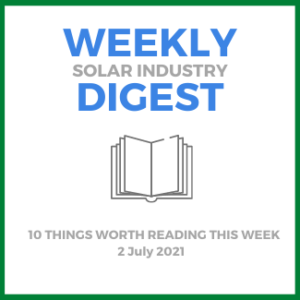Ernst Schweizer is expanding their solar mounting systems for flat roofs, ushering in installs for larger PV modules. There are now two new connection channels and a low support for the range of east/west and south flat-roof-system offerings for module widths up to 1,205 mm.
The IRS has extended the safe harbor provisions for US renewable projects when looking to qualify for tax credits. Its now 6 years for projects that began construction from 2016-19 and 5 years for ones that began in 2020. Compliance can be shown using “continuous effort” standard.
Inverters specially tailored for high-power and bifacial modules: SMA’s Sunny Highpower PEAK3 and Sunny Tripower CORE1, Ginlong’s Solis-(215-255)K-EHV-5G and Northern Electric Power’s 500- and 600-W microinverters (that they actually call “macroinverters”).
ASCE Code now looks particuarly at rooftop solar – providing 2 methods for calculating the proper wind load for solar arrays. This includes starting with a main wind-force resisting system, running wind tunnel testing for the most common rooftop installs, and making code adjustments to specifically address the mounting of an array.
NREL on North American continental system integration of renewables: multiple paths will lead to 80% power sector carbon reduction by 2050; interregional and international cooperation is key; transmission, storage, and flexible operation will lead to operational flexibility of the grid.
Aurora walks through why you want production guarantees. They define them (as distinct from warranties), look at how they help you close and impact design decisions, address how they’re facilitated by design software, relate to historical weather data and IRL factors that impact system performance.
A shift in utility mindset and organizational structure can help them meet missed emission reduction promises. Key is greater accountability and commitment to transformation as well as science-based reduction targets that include interim goals and detailed plans to achieve them.
Benefits of next gen solar tech: efficiency drives the price of everything down; local land savings that mean less local pushback; lower carbon footprint due to reduced equipment, transport, and labor usage; and serious industry reinvigoration on a grand scale.
It took 40 years but FERC now has an Office of Public Participation to facilitate participation by smaller organizations and individuals around FERC proceedings. The hope is to ease inequity around decision making while avoiding making the OPP just another unnecessary layer of complexity.
Make sure your commercial prospects know about a 2017 incentive: the bonus depreciation. They can depreciate 100% of the value of the solar asset in year one as a business-related expense. The benefit is set to last through to the end of 2022.
